Occupational environment monitoring at an industrial gas manufacturing factory
99,000 ₫
Note: The above price is calculated for one sample, and the price may fluctuate depending on the area of the environment to be monitored and market movements. For more accurate pricing support, please refer to the price list or contact our consulting staff directly.
Monitoring the environment of an industrial gas production factory is a session of collecting, analyzing, and evaluating workplace factors that may be harmful to workers’ health.
Table of Contents
Toggle1. Overview of the industrial gas factory
a. What is an industrial gas factory?
Factory producing industrial gas is a manufacturing facility specialized in producing and supplying industrial gases. Industrial gases include types of gases used in production processes and industrial operations, such as fuel gas, natural gas, nitrogen, oxygen, hydrogen, argon, and many other gases.
This factory is usually equipped with gas production equipment and technologies to produce, store, and supply high-quality industrial gases to customers in various industries. The production processes in the factory include treatment, compression, cooling, refining, and bottling of gases to meet customer usage requirements as well as safety and quality standards.

b. Production stages in an industrial gas factory
The production stages in an industrial gas factory may include:
- Separation and refining process: At this stage, gas sources such as natural gas or air are processed to extract the required gases and remove other impurities. The separation and refining process may use methods such as absorption, cryogenic processes, or combustion.
- Gas compression: After separation and refining, the gas is compressed to increase pressure and reduce volume. The gas compression process uses compressors to compress gas to the desired pressure level.
- Cooling: For some applications, the gas needs to be cooled to reduce temperature and create products such as liquid gases. The cooling process usually uses equipment such as compressors, refrigerators, or other cooling systems.
- Storage and transportation: After gases have been processed, compressed, and cooled, they are stored in tanks or special containers. Afterwards, gases can be packaged into smaller cylinders or transported through pipeline systems or specialized vehicles.

c. Types of machinery used in an industrial gas factory
The common types of machinery used in an industrial gas factory may include:
- Gas compressors: These are essential machines in the industrial gas production process. Compressors are used to compress gases from natural gas sources or air through the compression process. Common types of compressors include piston compressors, screw compressors, rotary compressors, and oil-free compressors.
- Cooling machines: Cooling machines are used to cool industrial gases, especially when producing liquid gases. Common cooling machines include refrigeration compressors, liquefied gas compressors, and absorption chillers.
- Chiller systems: Chiller systems are used to cool water or other liquids to regulate temperature and cool down gas production processes.
- Gas purification systems: To ensure produced gases meet quality and purity standards, factories may use purification systems such as filtration systems, impurity removal systems, and dust treatment systems.
- Control and monitoring systems: Industrial gas factories often have control and monitoring systems to manage production processes, ensuring efficiency and safety in operations.
- Storage tanks and cylinders: Storage tanks and cylinders are used to store and transport industrial gases after production. These devices include high-pressure storage tanks, liquid gas cylinders, and pipeline systems.

d. What occupational diseases may occur to workers in an industrial gas factory?
Workers in an industrial gas factory may suffer from the following occupational diseases:
- Respiratory diseases: Workers may be affected by irritants or chemicals present in industrial gases, causing respiratory problems such as bronchitis, asthma, pneumonia, or issues with the nose, throat, and bronchi.
- Skin diseases: Prolonged exposure to chemicals in the industrial gas production process may cause skin irritation, dermatitis, psoriasis, or skin cracking.
- Cardiovascular diseases: Pollutants in the working environment may have negative effects on the cardiovascular system, leading to conditions such as hypertension, coronary artery disease, and myocardial infarction.
- Digestive diseases: Exposure to toxic chemicals during production may cause digestive issues such as enteritis, gastritis, or liver diseases.
- Nervous system diseases: Chemicals in the working environment may affect the nervous system, causing symptoms such as headaches, dizziness, or even nerve damage.
- Ear-related diseases: High noise levels from machinery and equipment in the gas factory may cause ear damage, leading to hearing loss, ear disorders, or tinnitus.
To ensure worker safety, it is necessary to establish protective measures, including the use of protective equipment, ensuring proper ventilation and exhaust systems, periodic inspection and maintenance of machinery, and providing occupational safety and health training for employees.

e. Common types of industrial gases in the market
There are many common types of industrial gases on the market, each with specific applications in different industries. Below are some popular types:
- Nitrogen gas (N2): Nitrogen is widely used in industries as an inert gas, drying agent, anti-oxidation, and for product preservation. It is also used in welding, metal cutting, and biotechnology.
- Oxygen gas (O2): Oxygen is one of the most important gases in industries. It is used to support combustion, oxidation, and enable production processes such as welding, metal cutting, boilers, and in healthcare.
- Hydrogen gas (H2): Hydrogen is used in industries to produce chemical products such as ammonia and methanol. It is also used in energy production and storage.
- Carbon dioxide gas (CO2): CO2 is used in the food and beverage industry to create pressure and extend product shelf life. It is also used in welding, beer and beverage production, and refrigeration processes.
- Liquefied petroleum gas (LPG): LPG is a mixture of liquefied hydrocarbons, mainly propane and butane. It is widely used as fuel in household appliances, industrial operations, cooking, and in welding and metal cutting.
- Methane gas (CH4): Methane is the main component of natural gas. It is used as fuel in industries and also in various production processes such as power generation.
- Ammonia gas (NH3): Ammonia is used in the chemical industry for producing fertilizers, refrigerants, cleaning agents, and oxidizers.
2. Overview of occupational environment monitoring services
a. What is occupational environment monitoring in an industrial gas factory?
Occupational environment monitoring (or workplace environmental measurement) in an industrial gas factory is the activity of collecting, evaluating, and analyzing measurement indicators of workplace environmental factors in the factory, in order to implement timely solutions, minimize environmental impacts on worker health, and prevent occupational diseases. Occupational environment monitoring is a mandatory requirement for industrial gas factories.
Occupational environment monitoring plays the most important role in protecting and improving worker health, as employees are the main resource of enterprises and directly generate profits. Workers who are frequently exposed to hazardous occupational factors exceeding permissible standards will suffer health impacts and may develop occupational diseases.
REGISTER FOR OCCUPATIONAL ENVIRONMENT MONITORING SERVICE
b. Occupational environment monitoring program of An Toan Nam Viet
The occupational environment monitoring program of An Toan Nam Viet is a program researched by monitoring engineers in the field of occupational safety and environmental protection. With the goal of ensuring worker health and safety, this program uses modern measurement methods to monitor air quality, water, and microclimatic, physical, and dust factors in the workplace. This is a very important program for ensuring a safe working environment and protecting worker health.
In addition, the occupational environment monitoring program of An Toan Nam Viet also plays an important role in researching and developing new solutions to improve workplace environmental quality. With the dedication and professionalism of its monitoring experts, the exclusive program of An Toan Nam Viet is becoming a breakthrough in occupational safety management and environmental protection in Vietnam.

c. Standardization in occupational environment measurement processes
Standardization in occupational environment measurement processes of An Toan Nam Viet is a very important aspect in ensuring the quality of measurement results. To guarantee accuracy and reliability, this program applies recognized standards and standardized procedures of the Ho Chi Minh City Department of Health. This ensures that the collected data can be used with high reliability in workplace environmental assessment and decision-making for workplace improvements to protect worker health.
These standardized processes also ensure that measurement results are conducted by a team of monitoring specialists with high qualifications and years of experience, helping managers and experts rely on results from An Toan Nam Viet to make accurate and valuable decisions in worker health and environmental protection.
By applying standardization in occupational environment measurement processes, An Toan Nam Viet demonstrates its commitment to ensuring a safe workplace and protecting worker health, while also contributing positively to the development and improvement of occupational safety management and environmental protection quality in Vietnam.
d. Report on occupational environment monitoring results in an industrial gas factory
Occupational environment monitoring results are prepared according to Form No. 04 Appendix III issued under Decree 44/2016/NĐ-CP and made into 02 copies: 01 copy sent to the workplace contracting for occupational environment monitoring and 01 copy kept by the monitoring organization.
The storage period of occupational environment monitoring results is permanent as required by law.

e. Frequency of occupational environment monitoring according to law
According to Clause 2 Article 18 of the Law on Occupational Safety and Hygiene 84/2015/QH13, employers must organize occupational environment monitoring to assess harmful factors at least once a year.
f. Deadline for submission of occupational environment monitoring reports according to law
The deadline for report submission is before December 31 every year. Enterprises at production facilities are required to submit occupational environment monitoring reports to the Department of Health at the locality where the production, business facility has its head office and where workers are employed.
When there are changes in technology processes, production processes, or when renovating or upgrading workplaces that may generate new hazardous factors to worker health, enterprises at production facilities must update occupational hygiene records related to harmful factors requiring occupational environment monitoring.
g. Regulations on penalties for violations of occupational environment monitoring by employers
According to Article 27 of Decree No. 12/2022/NĐ-CP dated 17/01/2022 on penalties for administrative violations in the field of labor, social insurance, and Vietnamese workers working abroad under contracts:
- Clause 2: A fine from VND 2,000,000 – 5,000,000 shall be imposed on employers who fail to publicly announce occupational environment monitoring results and hazard management assessments to employees immediately after results are available at the workplace.
- Clause 3: A fine from VND 20,000,000 – 40,000,000 shall be imposed on employers who fail to carry out occupational environment monitoring to control impacts on worker health as required by law.
- Clause 4: A fine from VND 40,000,000 – 60,000,000 shall be imposed on employers who collude with occupational environment monitoring organizations to commit fraud in monitoring activities but not to the extent of criminal liability.
3. Harmful environmental factors for workers in industrial gas production factories
Working in industrial gas production factories may expose workers to several harmful environmental factors that can affect their health. Below are some environmental factors that can be harmful in industrial gas production factories:
- Toxic chemicals: Some industrial gas production processes use toxic chemicals such as ammonia, hydrogen chloride, hydrogen sulfide, and heavy metal compounds. Long-term and improper exposure to these chemicals can cause health problems such as skin irritation, pneumonia, respiratory issues, and even cancer.
- Dust and particles: The industrial gas production process may generate dust and fine particles in the air. Exposure to dust and particles can cause respiratory problems such as pneumonia, rhinitis, and other respiratory issues.
- Temperature and humidity: Certain industrial gas production processes can create working environments with high temperatures or high humidity. These environmental conditions may cause heat stress and fatigue, affecting workers’ health and work performance.
- Noise: Equipment and machinery in industrial gas production factories may generate loud noise. Continuous exposure to noise can cause ear problems, such as hearing loss and psychological stress.
- Toxic gases: During industrial gas production, there may be the presence of toxic gases such as cutting fumes, odorous gases, and other reactive substances. Exposure to toxic gases can cause serious health issues, including respiratory tract damage.
REGISTER FOR OCCUPATIONAL ENVIRONMENT MONITORING SERVICE
4. Measures to improve the working environment in industrial gas production factories
To improve the working environment in industrial gas production factories and protect workers’ health, the following measures can be applied:
- Ensure ventilation and dust extraction systems: Install effective ventilation and dust extraction systems to remove smoke, dust, and toxic fumes from the workplace. This helps reduce exposure to harmful substances and improves air quality.
- Use personal protective equipment: Ensure workers are fully equipped with and correctly use personal protective equipment such as masks, safety glasses, gloves, and protective clothing. These devices help reduce direct exposure to harmful substances and protect workers’ health.
- Ensure safety during work processes: Apply occupational safety regulations such as safety training, safe use of equipment and machinery, regular inspection and maintenance of equipment, and installation of warning signs and safety instructions.
- Noise control: Implement noise control measures such as using noise-reducing equipment, isolating machinery, and providing hearing protection for workers to reduce noise to a safe level.
- Regularly inspect and monitor the working environment: Conduct periodic workplace environment assessments to identify potential hazards and apply corrective measures. Monitor concentrations of harmful substances in the air and ensure compliance with air quality regulations in the factory.
- Training and awareness raising: Provide regular training for workers on potential hazards, how to use personal protective equipment, safe work procedures, and emergency measures. Raise awareness about health and workplace safety to enhance prevention and response to risks.
- Regularly organize occupational environment monitoring in factories and enterprises, collect and analyze harmful factors to workers, thereby adjusting and reducing risks to prevent occupational diseases for them.
5. Benefits of periodic monitoring of industrial gas production factories
An Toan Nam Viet provides your business with excellent benefits when using occupational environment monitoring services in accordance with Decree 44/2016/ND-CP on the management and control of harmful factors in the working environment affecting workers.
- Your business can proactively control harmful factors in workshops or factories.
- Receive consultation and recommendations on measures to minimize harmful factors and improve the quality of the working environment.
- Indirectly protect human resources, the main factor in the business development process.
- Reduce the impact of occupational diseases on human health, thereby reducing treatment costs in the future.
- Workers’ health is improved, leading to guaranteed and maintained product quality as well as output.
- Comply with occupational safety regulations and avoid legal risks.
- Create credibility and professionalism in all aspects, thereby enhancing the brand for your business.
The occupational environment monitoring service of Nam Viet is the solution to minimize the impact of occupational diseases, contributing to creating a healthy and high-quality working environment.

6. National Occupational Environment Monitoring Center
Occupational Environment Monitoring Center of Nam Viet is a professional unit specializing in monitoring and measuring occupational environment quality throughout all provinces and cities in Vietnam. With a team of experienced monitoring specialists, the center uses modern measuring equipment, ensuring accuracy and reliability.
In addition to providing monitoring services, the center also supports customers in planning, handling, and tracking occupational environment issues. With the motto “customers are the center”, the center focuses on customer satisfaction, meeting all customer needs, and is committed to providing the best solutions for businesses.
REGISTER FOR OCCUPATIONAL ENVIRONMENT MONITORING SERVICE
With investments in technology, equipment, and human resources, the monitoring center of Nam Viet has been and is becoming one of the reputable units in the field of occupational environment monitoring in Ho Chi Minh City with the following goals:
- We always value brand reputation and the quality of our products and services.
- We provide customers with the best possible and most suitable solutions.
- Together with a team of experienced Masters and Engineers with expertise, aiming to protect the environment and bring benefits to businesses.
- Coming to Nam Viet Environment Monitoring Team, your company will receive professional service from experts in the monitoring field. At the same time, enjoy the best cost advantages.
The process of occupational environment monitoring at Nam Viet includes the following basic steps:
- Before conducting occupational environment monitoring, our company always ensures that the machinery and equipment used for monitoring are adjusted and calibrated in accordance with legal regulations.
- Strictly follow the occupational environment monitoring procedures committed to the Department of Health.
- Honestly report the monitoring results to the employer.
- In cases where monitoring results do not ensure worker safety, Nam Viet will support providing remedial solutions and the workplace will implement as follows:
- Implement measures to improve working conditions to minimize the impact of harmful factors and prevent occupational diseases.
- Organize health examinations to detect occupational diseases and work-related illnesses early for workers in unsafe environments.
- Provide allowances in kind for workers in accordance with labor law regulations.

7. Occupational Environment Monitoring Price Quote
To help businesses conduct occupational environment monitoring in a professional and effective manner, Nam Viet provides customers with a price quote for occupational environment monitoring services with quality and reasonable costs.
- Our monitoring price list provides detailed information about the costs of the monitoring services we offer. This includes costs related to transportation, measurement, analysis, and reporting results. Customers can be fully assured of the accuracy and reliability of the monitoring reports we provide.
- We are committed to always offering the most competitive and reasonable prices in the market, and we are also always ready to provide quick and professional consultation to answer all inquiries about monitoring services.
- With the monitoring price list of Nam Viet, customers can easily choose service packages that suit their needs. We are committed to bringing customers the highest satisfaction with professional service quality.
No comments yet


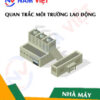
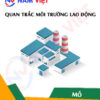

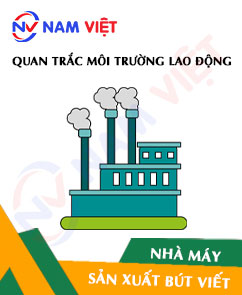


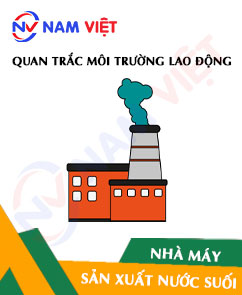
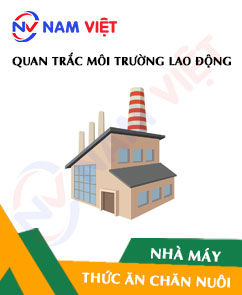


Review Occupational environment monitoring at an industrial gas manufacturing factory
There are no reviews yet.